1、Whats the meaning of this sign?

A、lanes for going in different directions
B、lane for both U turn and left turn
C、the lane of no left turn and no U turn
D、lane for both going straight and left turn
Answer:B
2、A vehicle may stop on the ramp of an expressway.
A、Right
B、Wrong
Answer:B
3、When causing a road accident involving property damage, the parties to the accident may leave the scene if they have no dispute over the fact and cause.
A、Right
B、Wrong
Answer:A
4、Whats the meaning of this sign?
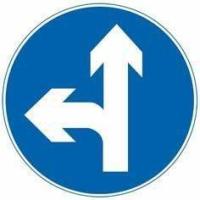
A、going straight and right turn
B、going straight and left turn
C、no going straight and no left turn
D、right turn and left turn only
Answer:B
5、What is the max speed limit on this road?

A、100 km/hr
B、90 km/hr
C、120 km/hr
D、110 km/hr
Answer:B
6、How to use lights when entering the speed-reducing lane?

A、turn on the hazard lights
B、turn on the head light
C、turn on the left-turn signal
D、turn on the right-turn signal
Answer:D
7、The three principles for careful driving are concentration, careful observation and early prevention.
A、Right
B、Wrong
Answer:A
8、Traffic Police can detain the vehicle according to law if it is without the mandatory traffic accident insurance in accordance with state regulations.
A、Right
B、Wrong
Answer:A
9、If discovering pedestrians abruptly cross the road while driving, the driver should immediately reduce speed and evade.
A、Right
B、Wrong
Answer:A
10、Driving a motorized vehicle on the road in this condition, the maximum speed can not exceed 50 kilometers per hour.

A、Right
B、Wrong
Answer:B
11、Which lane to choose when turning left in this intersection?

A、the far left lane
B、middle lane
C、not need to change lane
D、the far right lane
Answer:A
12、What does this sign mean?
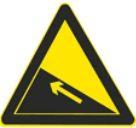
A、Reminding the side of a reservoir, lake or river ahead
B、Reminding the steep uphill road ahead
C、Reminding continuous two or more up slopes ahead
D、Reminding the steep downhill road ahead
Answer:B
13、When encountering an ambulance rushing in the same lane in the opposite direction, the driver should ________.
A、Move to the road side, reduce speed or stop to yield
B、Drive on by using another lane
C、Speed up and change lane to avoid
D、Continue to go in the original lane
Answer:A
14、The rear windshield defroster starts to work after pressing this switch.
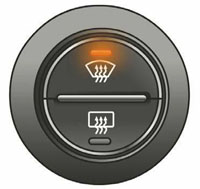
A、Right
B、Wrong
Answer:B
15、This sign reminds an unmanned level crossing ahead.
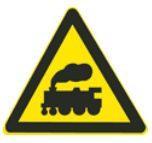
A、Right
B、Wrong
Answer:A
16、Whats the meaning of this sign?
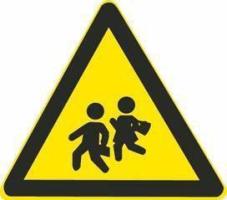
A、school area
B、watch for children
C、crosswalk
D、watch for pedestrians
Answer:B
17、The driver is prohibited from opening the door and letting passengers on and off when a vehicle has not come to a full stop.
A、Right
B、Wrong
Answer:A
18、The safety pillow is used to protect the driver‘s head when there is a rear-end collision.
A、Right
B、Wrong
Answer:B
19、When the vehicles cross each other at night, the driver may continuous change lights to remind the vehicle coming in the opposite direction and at the same should reduce speed and go forward or stop on the right side.
A、Right
B、Wrong
Answer:A
20、In which situation the traffic police can detain the vehicle according to law?
A、exceeding 10% of the prescribed speed limits
B、driving when he is exhausted
C、not buckled up while driving
D、driving after drinking
Answer:D